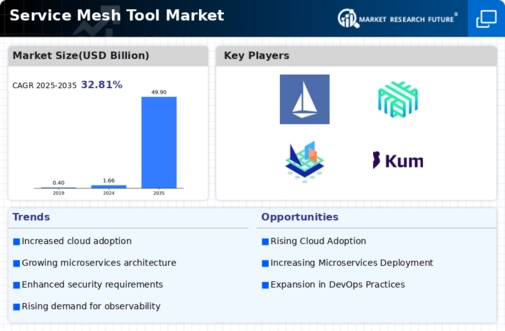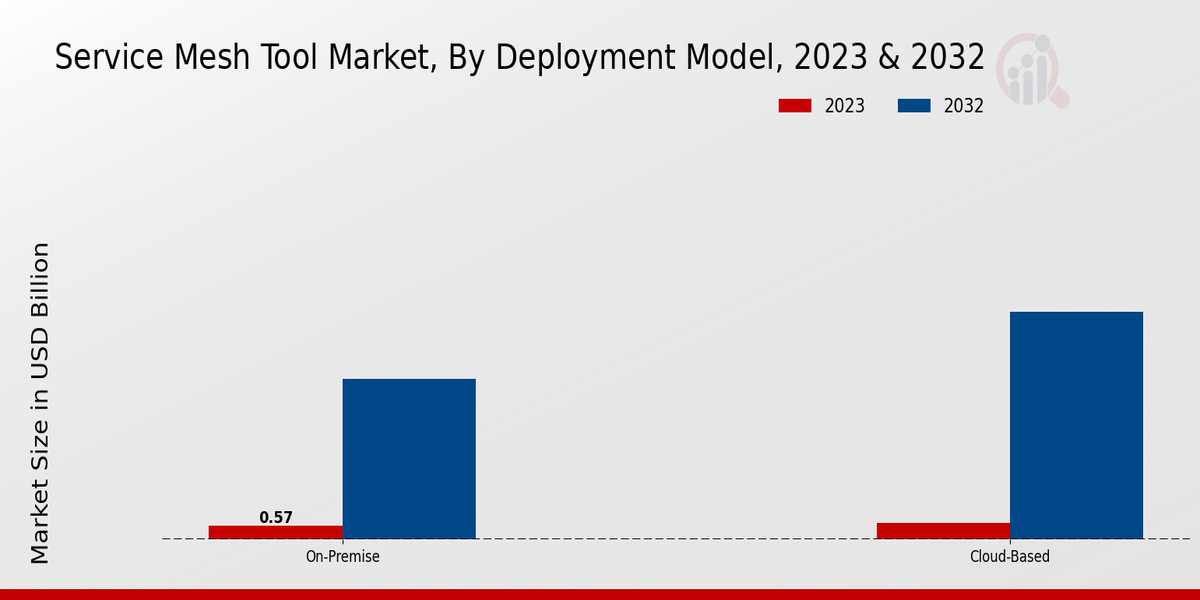Market Growth Chart
The Global Service Mesh Tool Market is poised for substantial growth, with projections indicating a market size of 1.66 USD Billion in 2024 and an anticipated expansion to 49.9 USD Billion by 2035. The compound annual growth rate (CAGR) for the period from 2025 to 2035 is estimated at 36.27%, reflecting the increasing adoption of service mesh tools across various industries. This growth trajectory highlights the critical role that service mesh solutions play in modern application development and deployment.
Regulatory Compliance and Governance
The Global Service Mesh Tool Market Industry is also shaped by the need for regulatory compliance and governance. As data privacy regulations become more stringent globally, organizations must ensure that their applications adhere to these standards. Service mesh tools facilitate compliance by providing features such as traffic management and policy enforcement, which help organizations manage data flows and access controls effectively. This focus on compliance is likely to propel the adoption of service mesh solutions, as businesses strive to mitigate risks associated with non-compliance and enhance their governance frameworks.
Increased Focus on Application Security
In the context of the Global Service Mesh Tool Market Industry, there is a heightened emphasis on application security. As organizations migrate to cloud environments, they face new security challenges that necessitate robust solutions. Service mesh tools provide essential features such as traffic encryption, access control, and observability, which are vital for maintaining secure communications between microservices. The increasing number of cyber threats and data breaches drives enterprises to invest in these tools. This trend is likely to contribute to the market's growth, as organizations prioritize security in their digital transformation strategies.
Rising Demand for Microservices Architecture
The Global Service Mesh Tool Market Industry is experiencing a surge in demand for microservices architecture, which facilitates the development and deployment of applications in a more modular fashion. This architectural style allows organizations to break down applications into smaller, manageable services, enhancing scalability and flexibility. As enterprises increasingly adopt cloud-native technologies, the need for service mesh tools to manage these microservices effectively becomes paramount. In 2024, the market is projected to reach 1.66 USD Billion, reflecting the growing recognition of microservices as a critical component of modern software development.
Growing Adoption of Cloud-Native Technologies
The Global Service Mesh Tool Market Industry is significantly influenced by the growing adoption of cloud-native technologies. Organizations are increasingly migrating their workloads to cloud platforms, which necessitates the use of service mesh tools to manage complex microservices architectures. These tools enable seamless communication, monitoring, and management of services across distributed environments. As businesses recognize the benefits of cloud-native approaches, the demand for service mesh solutions is expected to rise. Projections indicate that by 2035, the market could expand to 49.9 USD Billion, underscoring the critical role of service mesh tools in cloud-native ecosystems.
Need for Enhanced Observability and Monitoring
In the Global Service Mesh Tool Market Industry, the need for enhanced observability and monitoring is becoming increasingly apparent. As organizations deploy more microservices, the complexity of monitoring these services grows. Service mesh tools offer advanced observability features that allow organizations to gain insights into service performance, latency, and errors. This capability is essential for troubleshooting and optimizing application performance. The demand for such features is likely to drive market growth, as organizations seek to improve their operational efficiency and ensure high-quality user experiences in their applications.
















Leave a Comment